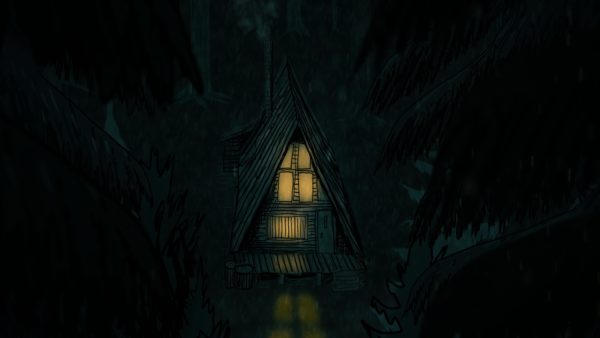 Joe and Terry discuss Hulu’s three part docuseries, Sasquatch.
Joe and Terry discuss Hulu’s three part docuseries, Sasquatch.
Spoilers follow for episodes 1-3.
JOE
Well Terry, are you ready to go back into the woods? Regardless of whether we’re working on the cannabis farm or participating in the “back to land” movement, all of the sudden my interest in venturing into Mendocino county in Northern California just dipped significantly after watching the first episode of Sasquatch.
The new docuseries, executive produced by the Duplass brothers and directed by Joshua Rofé, immediately adopts the usual true crime approach to its subject: put the murder up front! Sasquatch is driven by investigative journalist David Holthouse’s recollection of working on a pot farm in 1993 where he overheard a man tell the farm owner that the bodies of three dismembered men were found scattered among the cannabis. 25 years later, Holthouse decides to get to the bottom of the case.
The opening scenes feature the work of animator Drew Christie, who uses shadowy blues and greys to capture Holthouse’s hazy, potentially unreliable memories. It’s a bold choice by Rofé for a number of reasons: using animation rather than recreated footage with actors visually embodies the fine line between fact and fiction; it allows Sasquatch to covertly lean into the story’s more sensational elements (hence the bright red blood dripping on the cannabis leaves); and it distinguishes the series from other, more traditional docuseries.
This opening is the highlight of the episode for me…then a few issues arise.
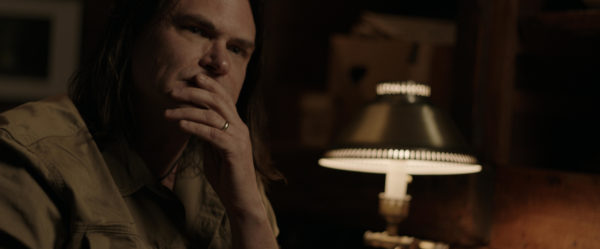
After establishing its premise and its protagonist, Sasquatch delves into the troubled history of the region in a cursory, expedited fashion (Indigenous slaughter? Check. 70s timber industry? Check. Hippies and grow-ops? Check)
It’s this middle section, particularly when the “back to land” talking heads battle the “Squatchers” for screen time, that Sasquatch feels slightly unfocused and tonally off. What began as a murder investigation by a renown journalist becomes a slightly judgey, comedic bit about hippies discovering that living off the land means growing pot and locals taking advantage of Bigfoot lore to open up museums and shops.
The judginess comes in subtly, like how Squatcher interviewee James “Bobo” Fay is one of the only people in the series to be subtitled (because of his apparent low brow accent?) and “life partners” Wayne and Georges are exclusively included to spout conspiracies and bicker. Several of these interviews appear to undercut or mock their subjects, and seemingly have been included to “all sides” the Bigfoot debate by presenting questionable advocates for the large simian’s existence whose enthusiasm should give smart, rational people pause.
Terry, I didn’t hate this, but certain creative decisions are giving me pause. What did you think of this introductory episode and its tonal shifts? Did you find the repeated overhead shots of the forest ominous (more ominous than the private investigator’s warning that ends episode 1)? And if you took a shot each time Holthouse mentions “3 dead Mexicans on a pot farm” how quickly would your liver give out?
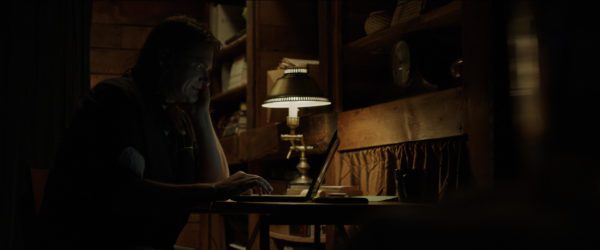
TERRY
From the opening animated shot of the opening to the rather muted first introduction to David Holthouse, I was hooked, Joe. As you mentioned, the use of animation lends itself to the idea that David might be misremembering an event that took place over twenty five years ago. It gives his story the same amount of folkloric vagueness that the continued stories of Bigfoot are surrounded in. The problem, I think as you began to assert, is that there’s potentially two wildly divergent stories unfolding.
On one hand, Sasquatch has to lay out the idea of the Bigfoot in this early episode. It’s the hook: that a sasquatch mangled and murdered three people on a pot farm in the early 90s. The most obvious way to do so is to talk to the locals and include the infamous 1967 Patterson-Gimlin film, which was filmed in the northwestern area of California, near where the murders took place. It’s basically the only purportedly “real” video of the cryptid, which also helped to establish the beast’s loping movements.
The problem is, that on top of being about Bigfoot, the docuseries also has to contrast the myth with what’s possibly a very real murder. So Sasquatch is forced to efficiently (but maybe not effectively) lay out the racist landscape of the Californian wilderness by briefly recapping a history of violence towards indigenous people and the rapacious nature of the loggers and industrialists that followed.
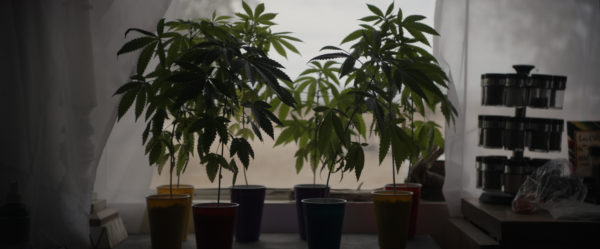
It’s the set dressing that explains the real life violence that continues towards BIPOC to this day. I think the point that Sasquatch might be trying to make–or its thesis that the next two episodes will explore–is that, while the enterprise might have changed from panning to logging to cannabis growing, the racism has remained.
But by trying to explore both in 45 minutes, Sasquatch doesn’t do either story justice. So we get these weird tonal shifts you mentioned, moving from “Bobo” the Sasquatch Hunter (and yes, singling him out for subtitling does feel somewhat malicious to my North American ears) to discussions of racist violence are a whiplash of moods.
I think the second episode “Spy Rock” tries to address this by digging a bit deeper into the two central conflicts. In particular, it continues the discussion of violence by introducing the militarized Campaign Against Marijuana Planting (CAMP) that could swoop in, on a moment’s notice, and destroy the cannabis farms’ livelihood in a single day. I particularly enjoyed the dichotomy the interviewees would suggest, of a CAMP Officer listening to the Grateful Dead, but packing AR-15s.
This image, contrasted with David’s research into the violent history of Spy Rock, the location of the purported sasquatch murders. He digs into local news going back decades of murders, stabbings, shootings. Learns that the Hells Angels controlled a portion of the mountain. And how the area’s rural and inaccessible nature created the perfect pocket for violence.
In particular, racist violence.
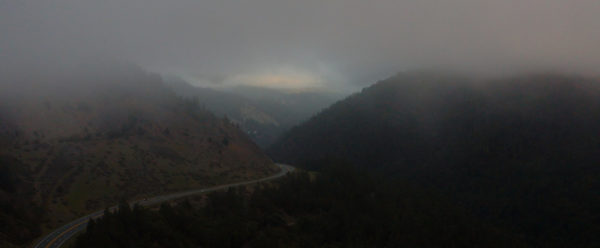
Which is why I think that while, yes, I would probably not have a liver if I did shot after shot every time David mentioned the “3 dead Mexicans,” I do think it was purposeful. The interviews, in particular, with Ghostdance, an indigenous cannabis farmer, combined with an emotional introduction to Diana, the niece of a slain Oaxacan immigrant worker, offer an intriguing look at the racism prevalent in the area. But it does still create quite a tonal disconnect between searching for sasquatch & the so-called Squatchers who love them and this very serious and very real problem.
My biggest concern and worry, though, is the way Sasquatch seemingly uses immigrant pain as more set dressing to explore what really happened in 1993. It’s a concern because it’s here that we’re introduced to REDACTED, an “alleged killer” who might have murdered the farmers in ‘93 and, potentially, Hugo, Diana’s immigrant uncle. It’s here that the uncomfortable nature of true crime docs is brought into sharp relief and I found myself wondering how Diana would feel to see her tearful face on screen while the person who might have been involved in her uncle’s murder is blipped out of existence.
Am I being too sensitive, Joe? What did you think of the way the “mystery” unfolds in this second episode? What are we to make with how Sasquatch opens with Bob Heironimus stating that he helped Gimlin and Patterson fake the infamous Bigfoot footage? Did the doc’s focus on the marijuana violence help assuage your concerns about the way the first episode paid lip service to the area’s troubled history? And what do you make of David’s own history in pursuing monsters, as “Spy Rock” gives a bit more information into the investigative journalist.
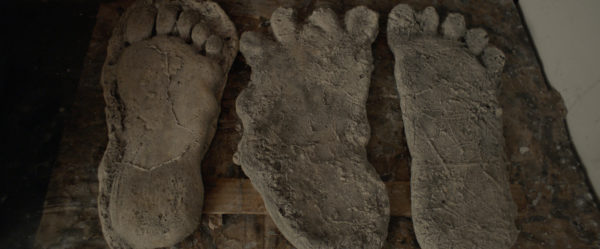
JOE
When the second episode ended and I realized that there was only one true piece of Sasquatch content – the aforementioned opening involving the humorous neighbourly exchange between Herionimus vs Gimlin – I definitely chuckled. Considering how the film is marketed, complete with title and promo art, it has certainly veered away from any cryptid origins.
For the purposes of episodes two and three, however, that is a necessary development. At its core, Sasquatch is a crime story. After a mildly problematic first episode, it was good to see the docuseries pivot to really dig into the economic and racial inequalities influencing Holthouse’s investigation.
With that said, there’s still some wonky skewed perspectives going on here. The editing of this passage and the talking head screen time allotted is pretty clearly one-sided against law enforcement. While this passage undoubtedly plays differently than it would have before Black Lives Matter shifted the dialogue around the police, Sasquatch very obviously aligns its narrative with the disgruntled pot growers by giving barely any time to the police.
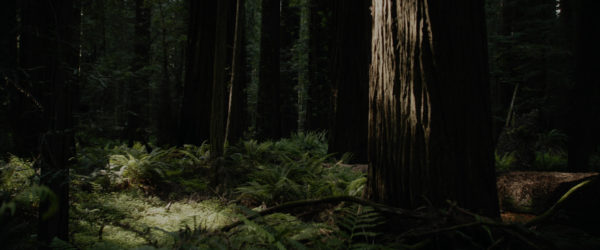
It’s particularly egregious in the episode two passages where the only really sound bites from CAMP officers are gleeful descriptions of how “fun” it was to trample on the Back to Lander’s property, restrain them and point weapons at “families with children and animals.” In hindsight, CAMP was a totally ridiculous government initiative that misconstrued marajuana as the ultimate gateway drug, but these sections of Sasquatch demonstrate a clear bias by director Joshua Rofé as he shapes the narrative.
This skewing of audience sympathies helps to paint a picture of an uninvolved police department who allowed lawless behaviour to flourish on the mountain, which – by extension – led to the deaths of both Hugo Olea Lopez’s death, and the alleged deaths of three other Mexican immigrant labourers. As Sasquatch shifts into its last hour, the seedy underbelly of Mendocino county really takes shape – in ways that is both overt (one of Holthouse’s informants casually drops racist slurs about Black men who were murdered) and covert (the blanket statements about how many unnamed, never discovered bodies are buried along the mountain).
It’s admittedly a touch hyperbolic in a way that reminded me of other series involving white, drug-peddling crime lords like Breaking Bad and Ozark, where the POC are merely the fodder to be chewed up and spit out. And while the take-away of the whole three part series is undeniably about how “weed, greed and murder” (the series’ logline), I couldn’t help but wish that instead of confirming the truth behind the 1993 murders that Sasquatch had settled for the ambiguous ending it initially was setting up.
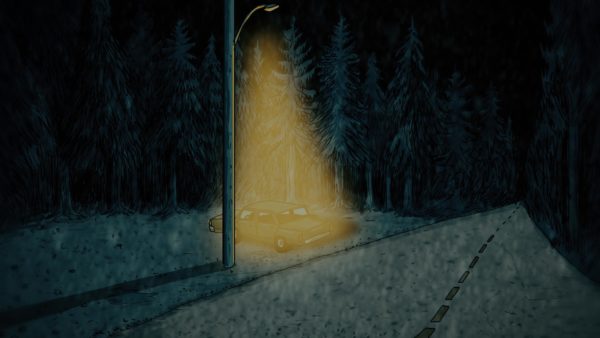
There’s a moment, after Bigfoot Gary has been cleared and before Holthouse receives his eleventh hour phone call, when it seems as though the truth is akin to the legends of the Sasquatch that have haunted the area. The third episode literally takes “Monsters Among Us” as its title and the title is multifaceted in that it refers to Holthouse’s own sexual abuse, the literal monsters running criminal grow-ops and the (potentially fictitious) spectre of Bigfoot roaming around the backwoods. There’s something captivating about the suggestion that both the mythical beast and the rumours of who or what prompted Holthouse’s triple homicide is unknowable or unsolvable.
The docuseries closes with Holthouse acknowledging that despite the phone call laying out the plot to “frame” Bigfoot for the murders, he’ll never truly know the truth. He’s right, of course – there have been no arrests or guilty parties brought to justice (hell, even poor Diana doesn’t get closure on her uncle’s murder) – but there’s also a certain “pat-ness” to the proceedings that makes everything wrapped up in a way that renders it safe for audiences to resume their normal lives. And that’s a touch disappointing. My final grade for the docuseries: B-
Terry, what did you think of the resolution of the docuseries and the “truth” about Holthouse’s case? Did you find that this final episode leaned far more heavily into true crime tropes with its myriad of clandestine parking lot meetings and blurred faces & voices? And who can we petition to get Ghostdance, the series break-out, his own series?
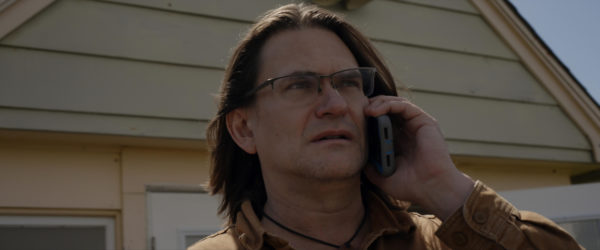
TERRY
What ultimately worked for me, particularly in this last episode, Joe, was framing the way these three murders took on an almost mythological bent as Holthouse began digging deeper. In particular, the way series standout Ghostdance was used as the voice of reason, explaining the history of racist violence in the area and touching on the truth of the situation. He says, “People come up with stories of monsters and stuff because there’s something of value” and while it’s a simple statement, it also rings true to the way the weed growers used myth as a means of scaring away competition.
“Monsters Among Us” tries to recontextualize Holthouse’s obsessive journey to discover the truth of a triple homicide in ‘93 as as much of a fool’s errand as the Bigfoot obsessives, like Wayne and Georges. They’re interviewed again saying, “Finding Bigfoot would fill a hole in my heart” and that sentiment is followed up with a desire to prove he’s “not crazy” and that he did see Bigfoot.
Simultaneously, Holthouse wants desperately to prove (again and again) that monsters do exist and this is one of those hazy cases that probably would never be solved. But I don’t think it completely sells this narrative; a lot of times Sasquatch throws a bunch of ideas on the wall but they never coalesce into a fully developed narrative.
If anything, I found myself less invested in this final episode because it leaned into the true crime tropes. The number of car conversations between blurred-faced individuals, followed with repeated pronouncements that things were getting scary and the continual use of voice memos that could have been taken at any time just really started to bog down the pacing.
That said, I did love the subtle way the stories about Bigfoot Gary grew to similar mythological proportions as the titular sasquatch mythos. The way he was built up as some sort of unstoppable force who was seeking revenge for the assault of his daughter, followed by the way his wife poked holes in it, simply stating he didn’t have a daughter in ‘93. It’s the way stories grow and manifest in different ways, just like the idea of the Bigfoot myth. And in that, Sasquatch was the most successful.
Those looking for a docuseries about Sasquatch will be disappointed in Sasquatch because, for all of the taglines and imagery and title choice, it’s very clearly about human monsters. I don’t think the show navigated this divide as well as it probably thought it did.
With that said, I was mostly riveted throughout the three episodes and I, too, give it a B-.
Sasquatch is now streaming on Hulu.